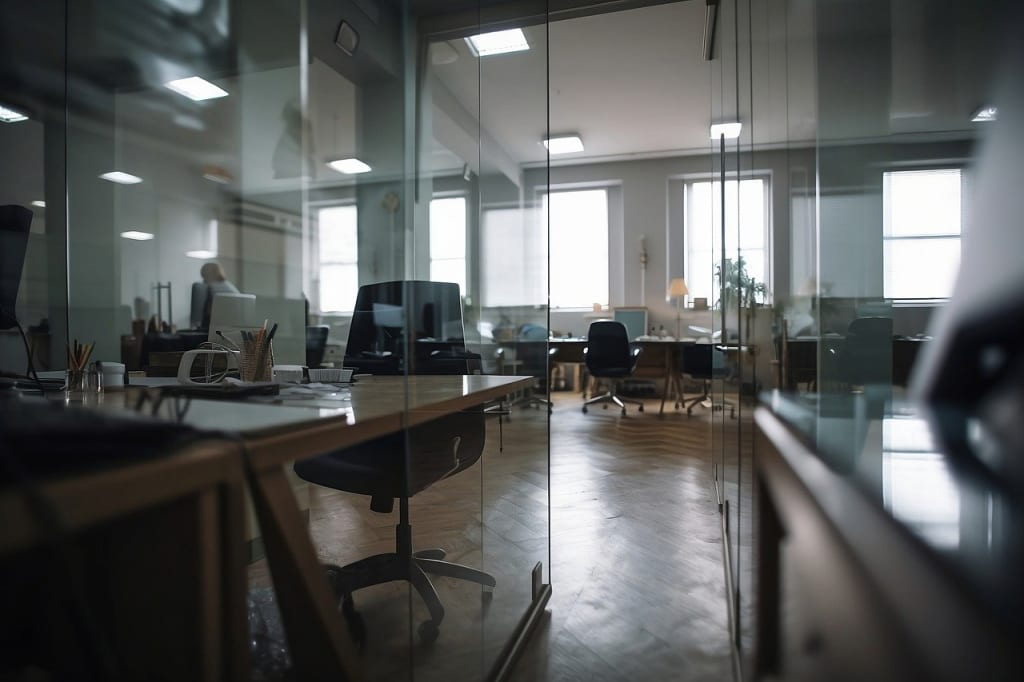Engaging All Senses in the Workplace: Exploring Sensory Design for a Multi-Dimensional Experience
How we can engage all the senses and design a workplace for a multi-dimensional experience

The current trend shows that the old paradigm of function over form is no longer applicable in the workplace. The office environment is increasingly becoming a key focal point for organizations as they seek to employ and retain the best staff. Enter sensory design which is a concept that seeks to engage all the senses to stimulate experiences in the multi-dimensional world. It is through the use of the senses of sight, sound, touch, smell, and taste that an Office Interior Designer can come up with workspaces that not only look good but also create a sense of excitement and balance in the senses.
Visual Appeal: Laying the foundation
Vision is perhaps the first consideration that comes to mind when designing an office environment. An office interior designer designs the color schemes, lighting, textures, and architectural aspects of an office in a way that they complement each other and look good. But sensory design goes one step beyond this and addresses how these visual factors can be used to stimulate other senses and how they can affect the experience as a whole.
For example, the use of biophilic design principles that involve the use of plants, natural lighting, and organic materials would not only be visually pleasing but also help to create a sense of calm and wellness. At the same time, lighting can be used to create a certain atmosphere, and textures can be selected to encourage tactile interaction.
Auditory Harmony: Soundscaping: The Art of Sound and Listening
Music is an important part that influences our emotional and cognitive processing. In an office environment, there is a lot of noise which can be very stressful and distracting but the right noise can also be used to enhance concentration for example in order to focus on a particular task. A sensory designer who designs office interiors knows that sound is an integral part of interiors and uses sound-absorbing materials like acoustic panels, curtains, and carpets to eliminate noise.
While noise reduction is one of the sensory design elements, it is also used to create certain atmospheres. This can include the use of water features like fountains or aquariums which give natural background sounds. Moreover, appropriate background music or white noise will help to drown out the noises that might distract the user and create a relaxing or energizing atmosphere.
Tactile Engagement: Inviting Touch
Touch is one of the most important aspects of perception in the workplace that is commonly overlooked in office design and construction. An office interior designer who is well-versed in sensory design chooses textured materials that encourage touch to make an office more interactive and engaging for the users.
For instance, the use of natural materials such as wood or stone or rough textures of fabrics can give a sense of coziness and dimension to a space while also offering a physical surface for the viewer to touch. Moreover, the use of abstract forms, for example rippled walls or patterned flooring, can encourage people to touch them.
Olfactory Delight: The Benefits of Fragrance Marketing.
Smell is one of the most interesting senses that has a strong relation with emotions and memories in sensory design. An office interior designer can benefit from the use of pleasant and subtle smells to make the office more appealing and welcoming or to elicit certain behaviors from the people working there.
For instance, essential oil diffusers or natural air fresheners can fill the room with relaxing smells like lavender or orange that are proven to help with stress and concentration. Or stimulating scents like peppermint or eucalyptus one can use to wake up during afternoons or brainstorming sessions.
Gustatory Gratification: The Impact of the Evolution of Food on the Gastronomic Culture.
It is a common oversight but the sense of taste is also an important component of office design which can affect employee satisfaction and health. An office interior designer who understands the concept of sensory design will also ensure that the office space has the right elements that can be used to satisfy the gustatory sense of the employees for instance the use of employee cafeterias, coffee bars, or even the use of small kitchenettes.
These culinary spaces can be designed to the point that they are more than just serving food – they are the perfect place for a meal because of the lighting, seating arrangement, and other elements that appeal to the senses. Incorporating herb gardens or fruit trees into the kitchen not only ensures fresh and flavorful ingredients for the food but also adds to the sensory experience with the sight of the plants, the smell of the herbs, and the texture of the fruit.
Crafting a Harmonious Experience
Each sense is important in sensory design, but it is even more critical to design the entire experience so that it is balanced and works together. An Office Interior Designer in Mumbai working in this manner will take into consideration how each of the senses will work together to create the best possible environment for the individual’s well-being and productivity as well as the overall satisfaction of the job.
Sensory design offers businesses the unique opportunity to not only have an aesthetically pleasing workspace but also to make it an exciting experience for the employees through their senses. This is not just a fad but a realization that offices have the ability to influence the experiences, emotions, and the quality of one’s life.
About the Creator
Enjoyed the story? Support the Creator.
Subscribe for free to receive all their stories in your feed. You could also pledge your support or give them a one-off tip, letting them know you appreciate their work.





Comments (1)
Fantastic. Keep up the good work.